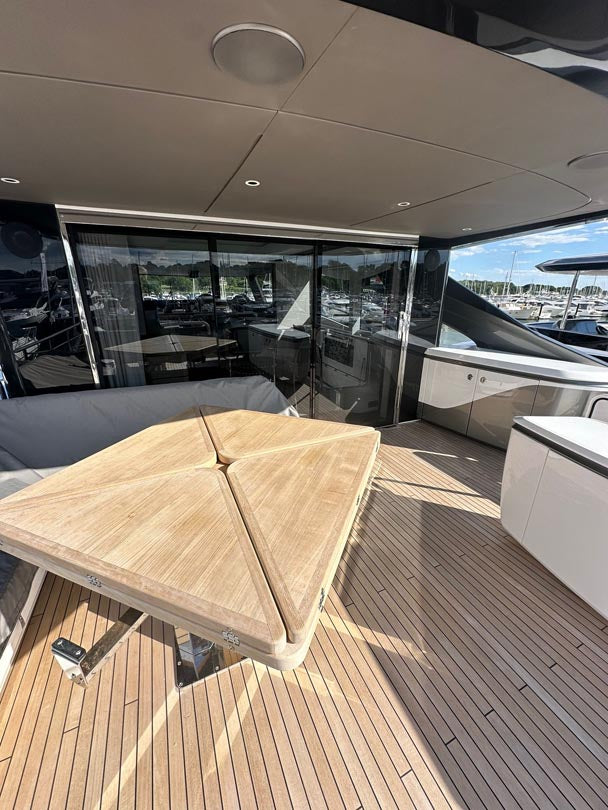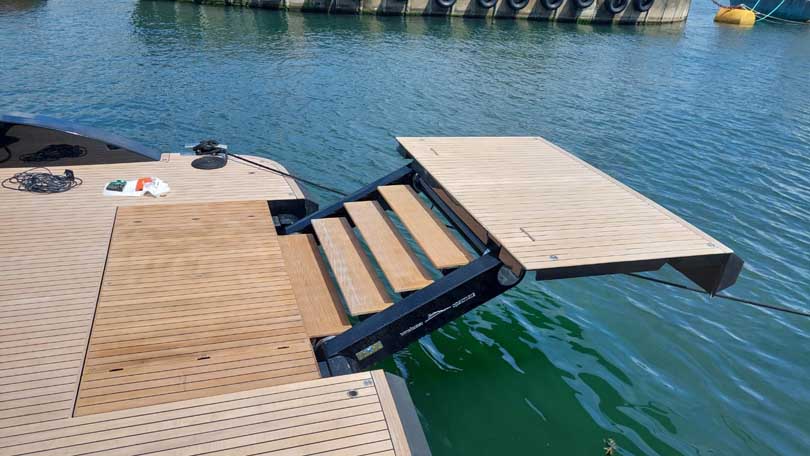How to Install a Marine Stereo in Your Boat: The Ultimate Guide
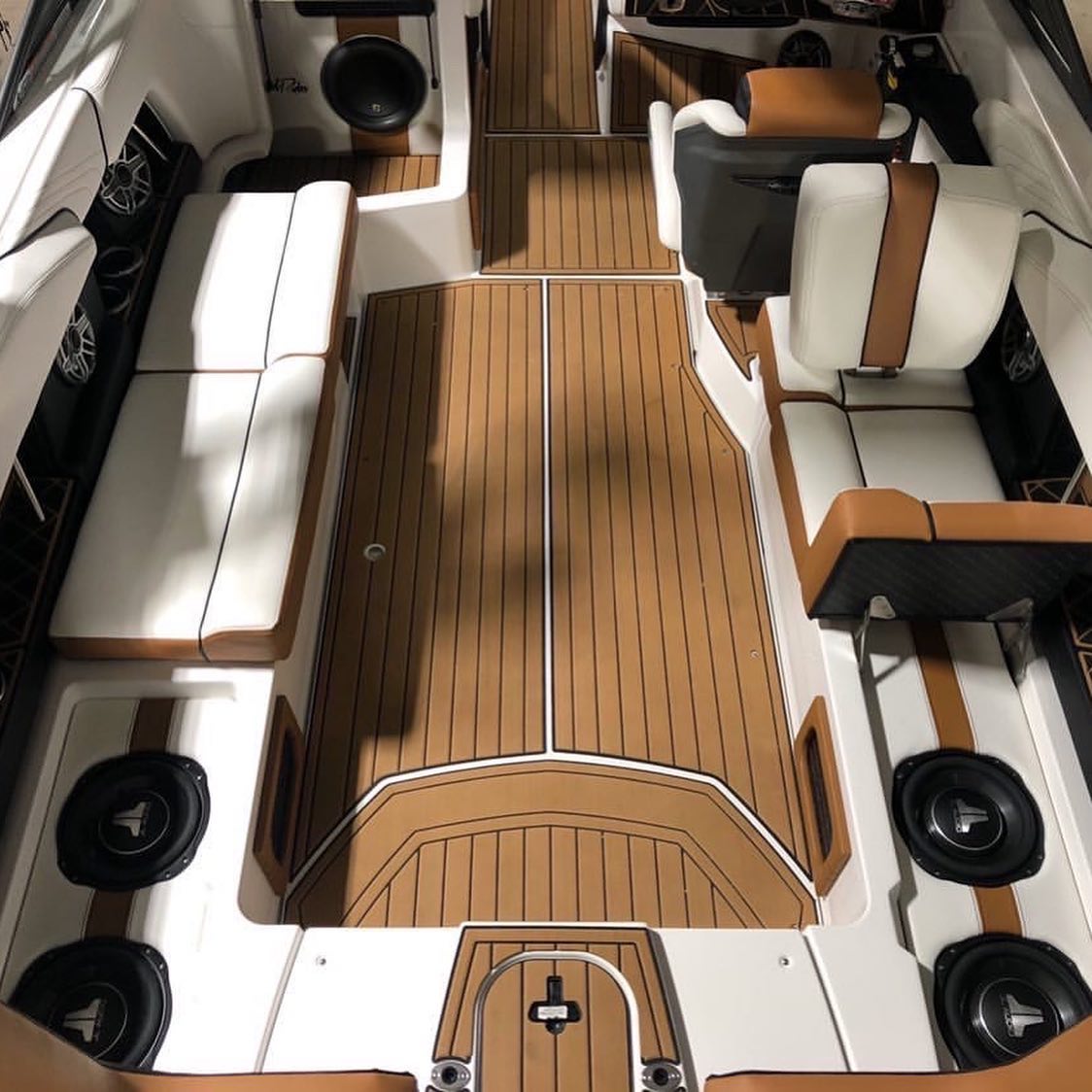
Imagine gliding through the water on your boat, with a perfectly installed marine stereo system providing the soundtrack for your adventure. The right audio system can transform a simple boating trip into an unforgettable experience. But how do you ensure that your marine stereo is installed correctly, providing high-quality sound and durability? This ultimate guide on “how to install a marine stereo in your boat” is here to help you every step of the way, from selecting the right marine audio system to troubleshooting common installation issues.
Key Takeaways
- Securely install a marine stereo system with corrosion-resistant hardware, proper speaker placement and wiring connections.
- Choose the right audio components and accessories for improved sound quality, volume, convenience and safety.
- Troubleshoot common installation issues to ensure successful setup of your marine audio system.
Marine Stereo Installation Essentials
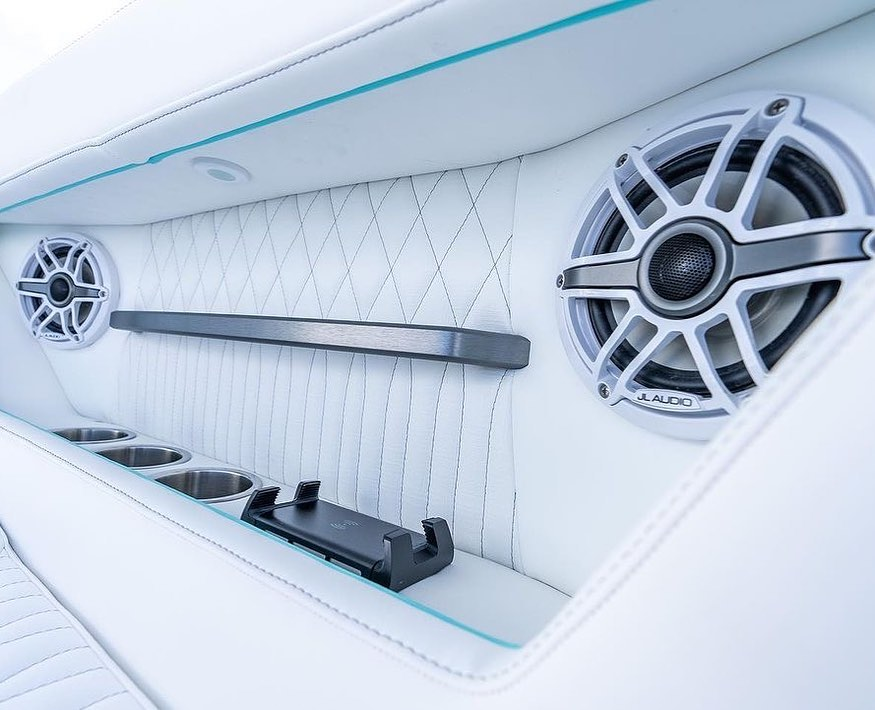
Understanding the basics of marine stereo installation is the first step towards a successful and enjoyable audio experience on your boat. From the type of stereo system you choose to the way you install it, every detail counts in achieving the high-quality sound you desire. Here are some crucial steps to follow:
- Mount the stereo unit securely.
- Install speakers in the appropriate locations.
- Wire the system correctly using corrosion-resistant hardware.
- Consider adding an amplifier for improved sound quality.
- Test the system and make any necessary adjustments.
By following these steps, you can create a sound system that surpasses the performance of a factory-installed stereo.
Marine audio systems are available in a range of sizes and configurations, allowing you to tailor the setup to your boat and personal preferences. Whether you’re upgrading from a standard audio system or installing a brand new one, several factors must be considered to ensure a smooth installation process.
Selecting the Right Marine Audio System
The foundation of a high-quality marine audio system lies in the selection of marine-grade components. Unlike standard automotive systems, marine stereo systems are specifically designed to withstand the harsh marine environment, offering shock protection and the ability to tolerate water splashes and moisture. You can also see our post on the best Marine Audio Brands.
Consideration of the number and placement of speakers is pivotal when adding them to your marine audio system. For instance, it is recommended that speakers be added in pairs, ensuring an equal number of right and left speakers. This will help create a balanced and immersive audio experience on your boat.
Preparing Your Boat for Installation
Gathering the necessary tools and preparing your boat is a critical step before starting the installation process. You’ll need the following tools:
- Screwdriver
- Wire cutters/strippers
- Crimping tool
- Drill
- Hole saw
- Multimeter
- Heat shrink tubing
- Electrical tape
- Zip ties
- Marine-grade silicone sealant
If you’re replacing old speakers, remove them carefully by unscrewing the mounting screws, detaching the wires, and sliding the speakers out of place. Additionally, when working with fiberglass, opt for screws with nuts as an alternative to wood or sheet metal screws, as they provide a more secure connection.
Installing the Marine Stereo Unit
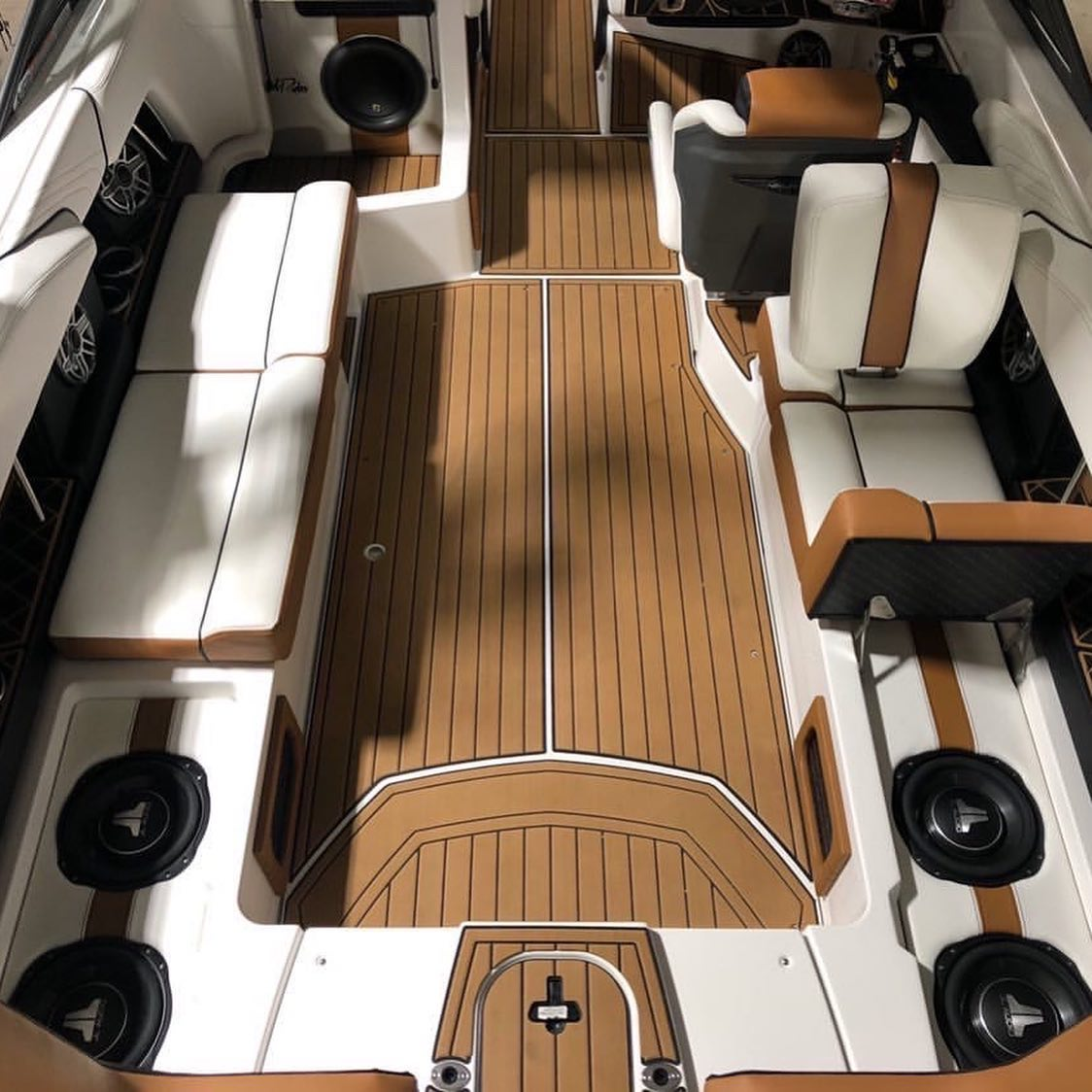
After choosing the appropriate marine audio system and preparing your boat, you can move on to installing the marine stereo unit. Proper installation involves:
- Choosing an appropriate mounting location
- Securing the unit with screws, mounting sleeves, or metal straps
- Depending on the stereo model, securing the mounting stud affixed to the rear of the stereo case with a metal fastener like plumber’s tape
- For flush-mounted head units, using through-bolts and aircraft-grade Nylock locking nuts.
Before mounting the stereo, follow these steps:
- Strip the insulation from the power and speaker wires and crimp connectors onto them in advance.
- If you’re replacing an old marine stereo with one from the same brand, you might be able to reuse the existing wiring harness by simply plugging it into the new stereo.
- In case your stereo unit didn’t include a rubber gasket, apply a bead of silicone sealant around the edges to prevent water intrusion.
Choosing the Ideal Mounting Location
The performance and durability of your stereo unit are significantly influenced by its mounting location. Before cutting a hole for the stereo unit, ensure that the space is sufficient to house the stereo’s face and deep enough to fit the back of the unit. Measure the clearance twice and verify that there are no cables or wires behind the intended mounting spot. The recommended mounting angle for a marine stereo unit is up to 20 degrees, with an additional 10 degrees of allowance for any boat movement.
To protect the stereo unit from water splashes and spray, consider affixing hinged plastic splash guards to the faceplate of the stereo. When selecting a mounting location for the input port, prioritise accessibility.
Securing the Stereo Unit
After selecting a suitable mounting location, adhere to the manufacturer’s instructions and secure the stereo unit using screws, mounting sleeves or metal straps. Stainless steel hardware is recommended for optimal protection against rust and damage, especially when working with fiberglass.
Avoid using sheet metal and wood screws in fiberglass, as they can be easily stripped out.
Speaker Placement and Installation
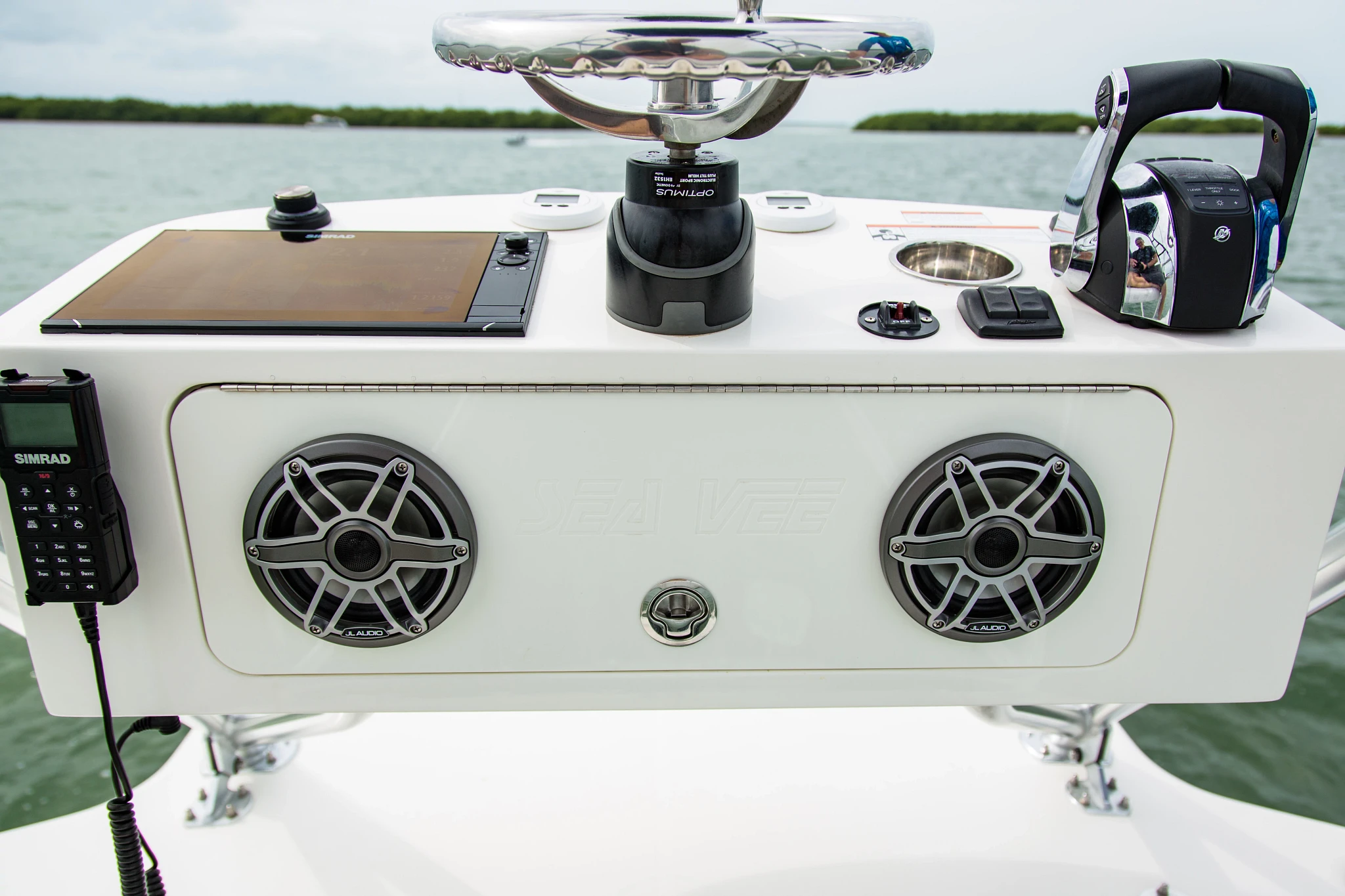
Achieving optimal sound quality and durability in your marine audio system is largely dependent on correct speaker placement and installation. There are two primary types of speakers: flush-mounted and box speakers. Flush-mounted speakers require cutting holes in the boat for installation, while box speakers can be installed without any modifications to the boat’s structure and offer an aesthetically pleasing factory-like appearance.
Determining Speaker Locations
Considerations for determining speaker locations include sound projection, dry areas, and minimal interference with other boat components. The most effective speaker locations usually include the bowrider area, beneath the helm, and directed towards the listeners. Installing speakers in the back on each side and in the seat base opposite the driver can also provide excellent sound projection.
In addition, if a subwoofer is desired, consider placing it in a storage locker in the stern, bow, or amidships.
Installing Marine Speakers
Installing marine speakers involves the following steps:
- Choose between flush-mount or clamp-mount methods, depending on the type of speaker and your preference.
- Create holes for flush-mounted speakers or drill bolt holes for box speakers.
- Make sure the speakers fit correctly, but refrain from securing them in place at this time.
For a secure and organised installation, follow these steps:
- Use color-coded wires to easily identify and connect the speakers.
- Use heat-shrink crimp connectors to ensure a strong and reliable connection.
- Use wire clamps to secure the wires and prevent them from getting tangled or damaged.
- Apply a bead of 100-percent silicone sealant around the edges of the speakers to create a watertight seal.
By following these steps, you can ensure a professional and effective wiring installation for your speakers.
For more information on best speakers see out guide on Best Marine Audio Systems.
Wiring Your Marine Stereo System
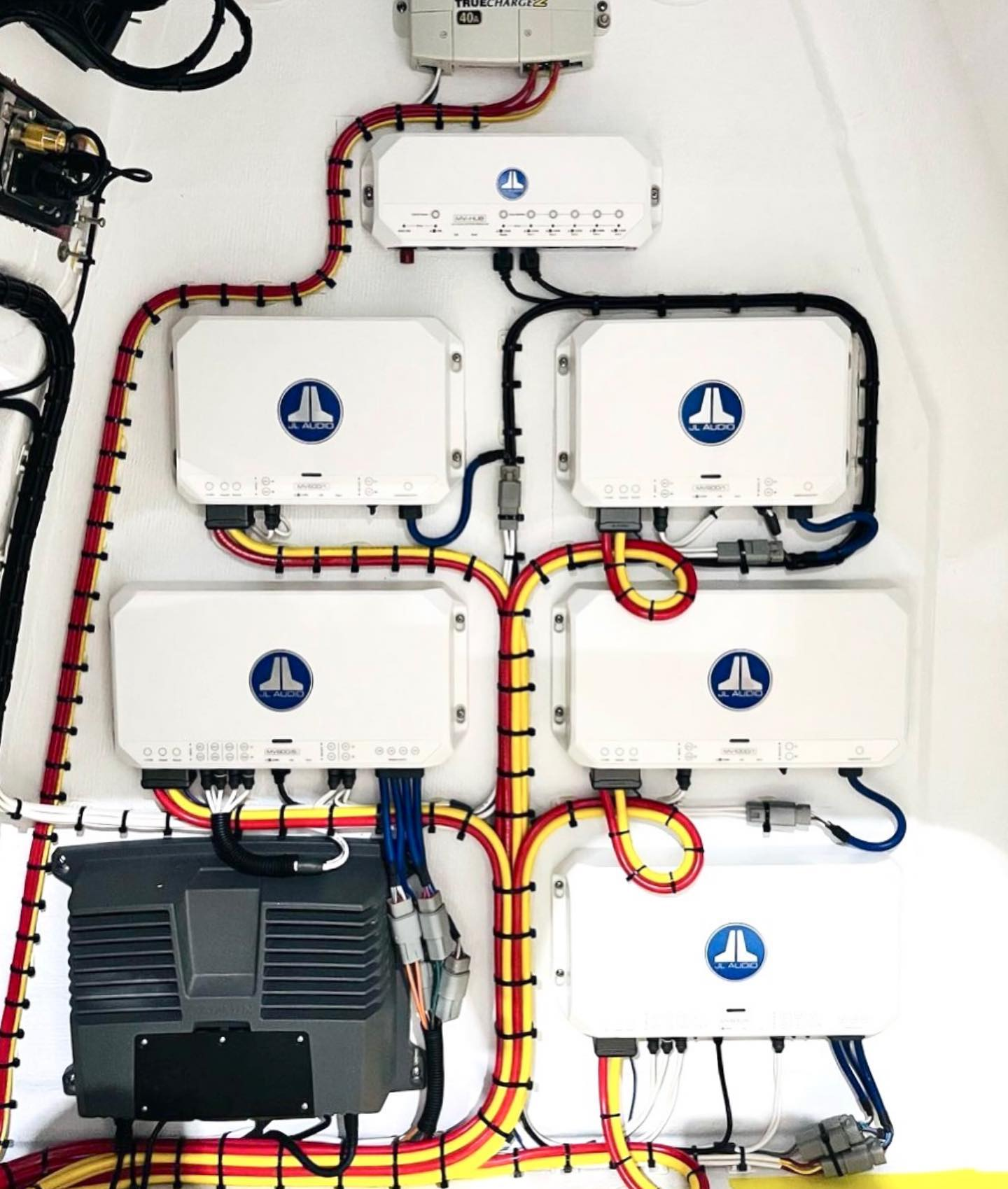
Proper power supply and speaker connections rely on the correct wiring of your marine stereo system. Using color-coded wires makes the process straightforward, as:
- The red wire connects to the positive terminal of the battery
- The black wire connects to the negative terminal
- The yellow wire connects to the battery, if present
Ensuring secure and corrosion-resistant wiring connections is essential for the longevity and performance of your marine stereo system.
Connecting Power and Ground Wires
To connect power and ground wires, follow these steps:
- Use corrosion-resistant hardware and ensure secure connections.
- The blue wire serves as a control wire, connecting with the switched wire on an external device, like an amplifier.
- The black wire, acting as the ground wire, connects to the negative terminal on the battery.
- The red wire connects to the boat’s ignition.
After connecting the power and ground wires to the battery, test the connections by turning on the stereo and confirming that it functions correctly.
Wiring the Speakers
When wiring the speakers, follow these steps:
- Use color-coded wires to ensure appropriate connection and polarity.
- Connect the speaker wires to the appropriate positive and negative terminals on the speakers.
- Make sure the wires are securely fastened and not exposed to water or other potential hazards.
Utilise heat-shrink crimp connectors for a secure and waterproof connection between wires.
Adding Accessories and Upgrades
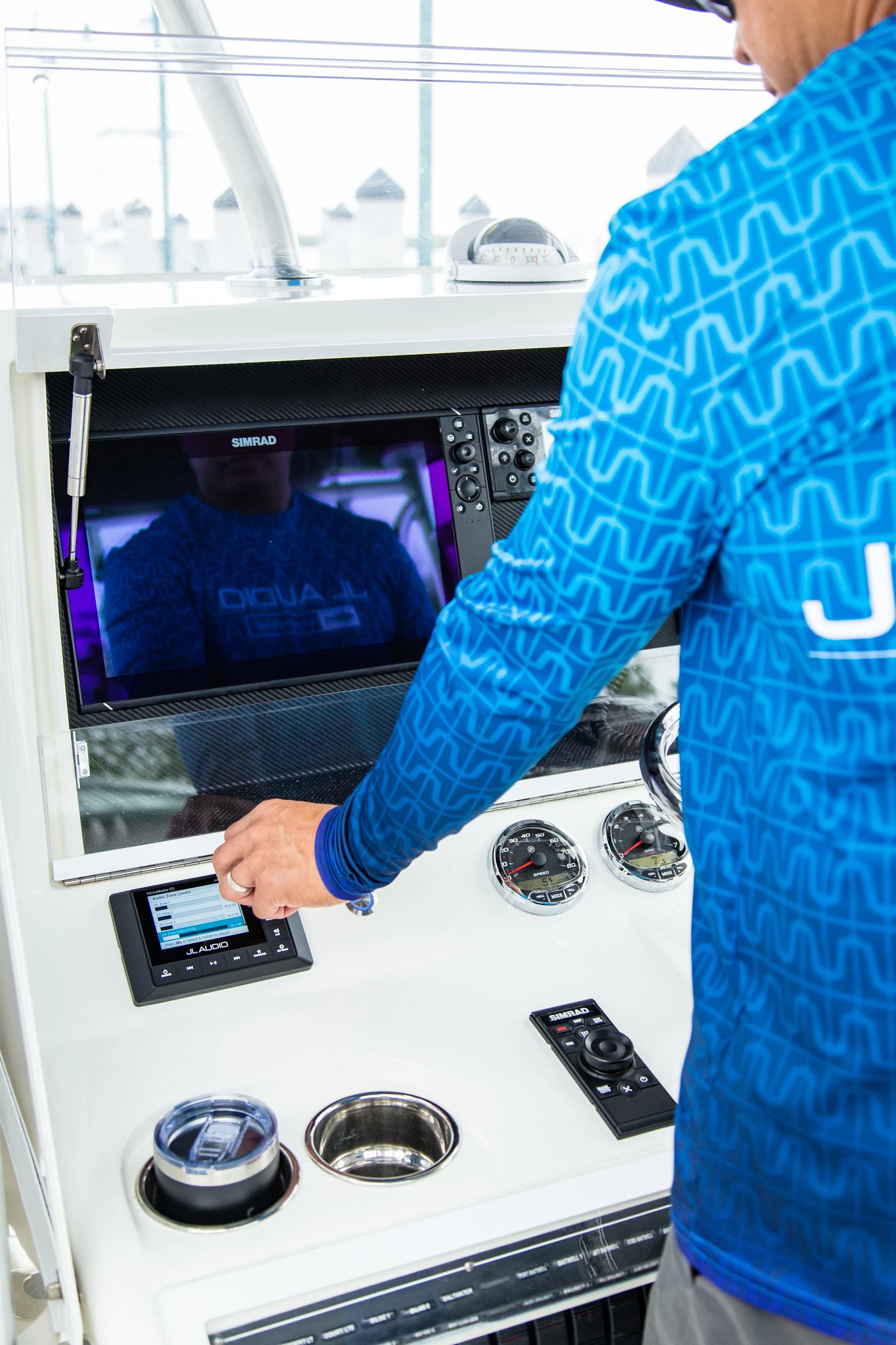
Accessories and upgrades can significantly enhance your marine audio experience. Some accessories to consider include:
- Bluetooth adapters
- Cables
- Brackets
- Speakers
- Subwoofers
- LED lighting
- Radio covers
- Wireless remote controllers
- Marine-rated stereo equipment
These boat stereo accessories can improve sound quality, volume, and overall enjoyment of your boating experience.
Marine Amplifiers
Marine amplifiers can significantly boost sound quality and volume on your boat, providing an enhanced audio experience. When selecting a marine amplifier, consider the following factors:
- Power output
- Waterproof and corrosion-resistant design
- Compact size
- Compatibility with your boat’s audio system
- Expandability for future upgrades
The correct installation of a marine amplifier is key, usually involving the use of RCA pre-amp output jacks located on the rear of the stereo and creating holes for running wires for amplifier installation.
Remote Controls and Additional Features
Remote controls can greatly improve the user experience of marine audio systems by offering convenience, safety, accessibility, and versatility. Installing a marine stereo remote control involves identifying the mounting location, connecting the remote control to the stereo receiver, securely attaching the remote control to the boat, and testing the remote control for proper functionality.
Additional features that can enhance your marine audio system include:
- NMEA 2000 compatibility
- Multiple controllable audio zones
- FM/AM radio
- Bluetooth connectivity
- Water resistance
- UV protection
- Anti-corrosion properties
- High sound quality
- Expandability options
- USB ports for device charging and playback
Troubleshooting Common Installation Issues
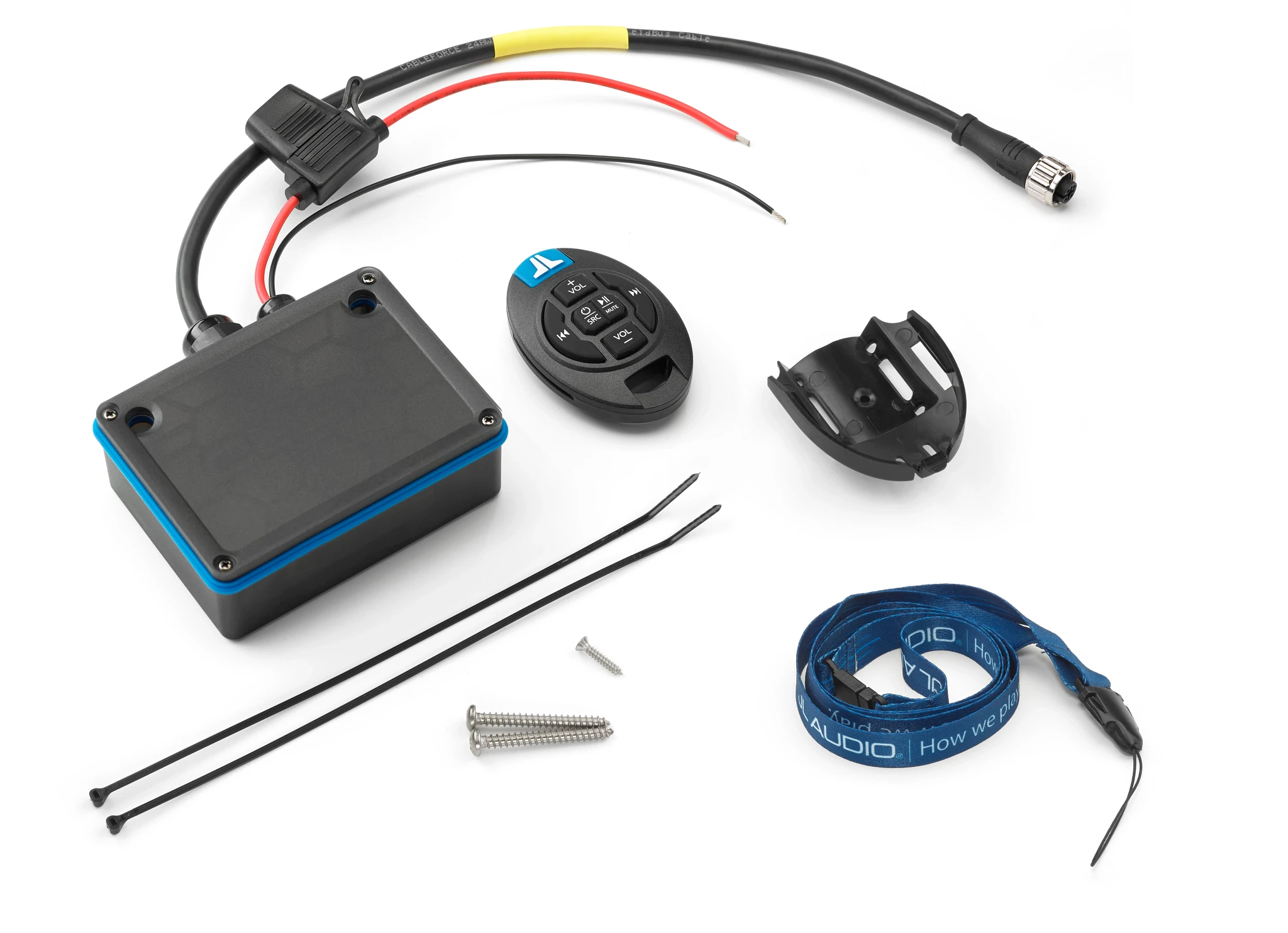
During the installation of a marine stereo system, you may encounter common issues like DC power, space limitations, wiring problems, water damage, and interference. Typical connection issues include DC power issues, improper cable connections, wiring errors, and lack of maintenance.
Addressing these issues is key to ensuring a seamless and enjoyable audio experience.
Addressing Sound Quality Issues
To address sound quality issues, follow these steps:
- Check speaker placement: Proper speaker placement is crucial in a marine audio system, as it directly impacts sound quality and clarity. Make sure your speakers are positioned correctly.
- Check wiring connections: Ensure that all wiring connections are secure and free from damage.
- Consider upgrading your speakers: If the sound quality issues persist, it may be worth considering upgrading your speakers for improved performance.
By following these steps, you can improve the sound quality of your marine audio system.
Fixing Connection Problems
Fixing connection problems involves inspecting wiring, power supply, and device compatibility. Check for any loose or damaged wires, ensure the power cable is properly connected, test the power supply with a voltmeter, and verify that your devices are compatible with the marine stereo system.
Regular maintenance and inspection of your marine stereo system can aid in preventing issues and guaranteeing a seamless audio experience on the water with marine stereos.
Summary
In conclusion, installing a marine stereo system in your boat is an exciting project that can greatly enhance your boating experience. By following the tips and guidelines in this ultimate guide, you’ll be well on your way to enjoying your favourite music and creating unforgettable memories on the water. So, embrace the adventure and let the sound of your marine stereo system be the soundtrack to your next boating journey. See also our guide on: the ultimate guide to marine audio systems.
Frequently Asked Questions
Can I put a car stereo in my boat?
Yes, you can install a car stereo in your boat; however, make sure to purchase a waterproof or marine model as it will be more resistant to water damage. Additionally, you may want to look into getting a model with active control that can handle CD jumping when going over waves.
Where is the best place to install speakers in a boat?
For the best results, install your speakers in the centre of the console and protect them with a remote-controlled speaker box or waterproof sleeve.
What's the difference between a marine stereo and a regular stereo?
Marine speakers are designed to be more durable and water-resistant to withstand external elements, making them better equipped for the marine environment than regular car speakers.
Where should marine speakers be placed?
For optimal sound quality, marine speakers should be placed under the gunwales in the aft cockpit and aimed away from each other to prevent sound cancellation. Additionally, they should be positioned out of the way of feet or knees of anglers in the aft cockpit or along the gunwales.
What is the optimal mounting angle for a marine stereo unit?
For optimal performance, a marine stereo unit should be mounted at an angle up to 20 degrees, allowing for an additional 10 degrees of movement due to the boat.
